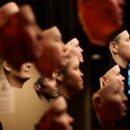Leisure-loving CEOs come under scrutiny
“During 10 critical days of (one of the worst crises) in (Bear Stearns’) 84-year history, Bear’s chief executive wasn’t near his Wall Street office. James Cayne was playing in a bridge tournament in Nashville, Tenn., without a cellphone or an email device.
…In summer weeks, he typically left the office on Thursday afternoon and spent Friday at his New Jersey golf club, out of touch for stretches, according to associates and golf records. In the critical month of July, he spent 10 of the 21 workdays out of the office, either at the bridge event or golfing…”
Katy Kelly, The Wall Street Journal (November 5, 2007)
The knives are out for James Cayne. His company, Bear Stearns, was bleeding in July this year when two of its hedge funds dramatically lost value. Eventually, both collapsed.
The excerpt above is from a WSJ story featured in the Business Daily this week. James Cayne took home US$ 34 million last year, and became the first Wall Street boss to own a company stake worth more than US$ 1billion (you might want to read that again). For that kind of reward, aggrieved shareholders might well expect him to spend more time in the office – particularly during an unprecedented crisis that might threaten the future of his firm.
I don’t know about bridge, but golf is certainly a perennial favourite for the CEO classes in Kenya. Many a corporate boss spends a good chunk of time out on the greens every week. This is an open secret, and a widely shared addiction. But is it a bad thing?
The golfers will tell you that the golf course is where they network like crazy and rub shoulders with their peers, and that many a breakthrough deal is sealed on the putting green. The doubters will cast a sceptical eye and say that is so much eyewash – it’s just the boys justifying running away to play, as boys always do.
The bigger issue concerns the work-life balance of the CEO. Should the boss be a workaholic, working all hours and getting personally involved in everything? Or an elevated leader whose job is think great thoughts amidst great people while delegating all day-to-day responsibilities?
At national level, we have encountered the two extremes. We had more than two decades of the (very) hands-on president who concentrated all power behind his own desk; we have had five years of the (very) hands-off leader who seemed to regard most matters, including political management of his coalition and offering direction on national issues, as beneath his notice.
Personalities differ, and so does the appetite for hard work. We cannot set hard-and-fast rules for how bosses should lead and how many hours they should clock. Diversity enriches and enlivens business life, after all. But it is not too difficult to see that a keen sense of work-life balance should be a key part of every CEO’s judgement.
Working obsessively long hours, annoying everyone by always looking over their shoulders, wanting every decision to end up at your desk – that is archaic practice. Those leaders destroy teams. Equally, spending most of your working days in overseas conferences, golf courses and cocktail parties is an abdication of duty. The CEO must be passionately immersed in the company – but he or she must be careful to let other people grow and develop.

Buy Sunny Bindra's new book
The X in CX
here »
Popular Posts
- You are who you hang out withSeptember 28, 2025
- Born knowing the waySeptember 21, 2025
- The cost of pretenceSeptember 7, 2025
- The art of the CX rescueSeptember 14, 2025
- The balance sheet that mattersOctober 5, 2025











